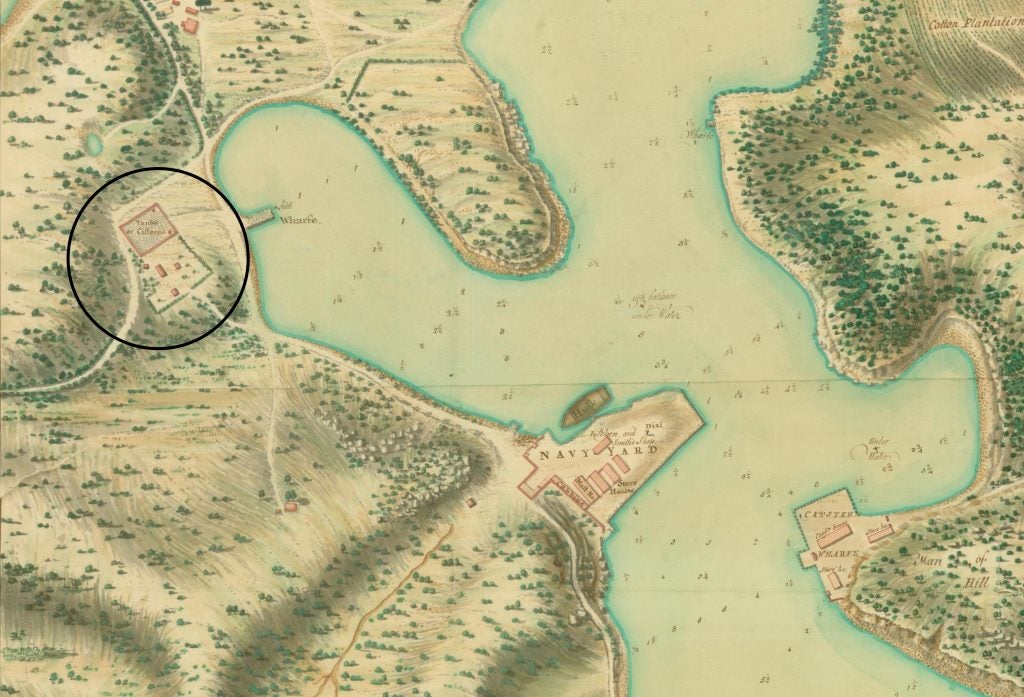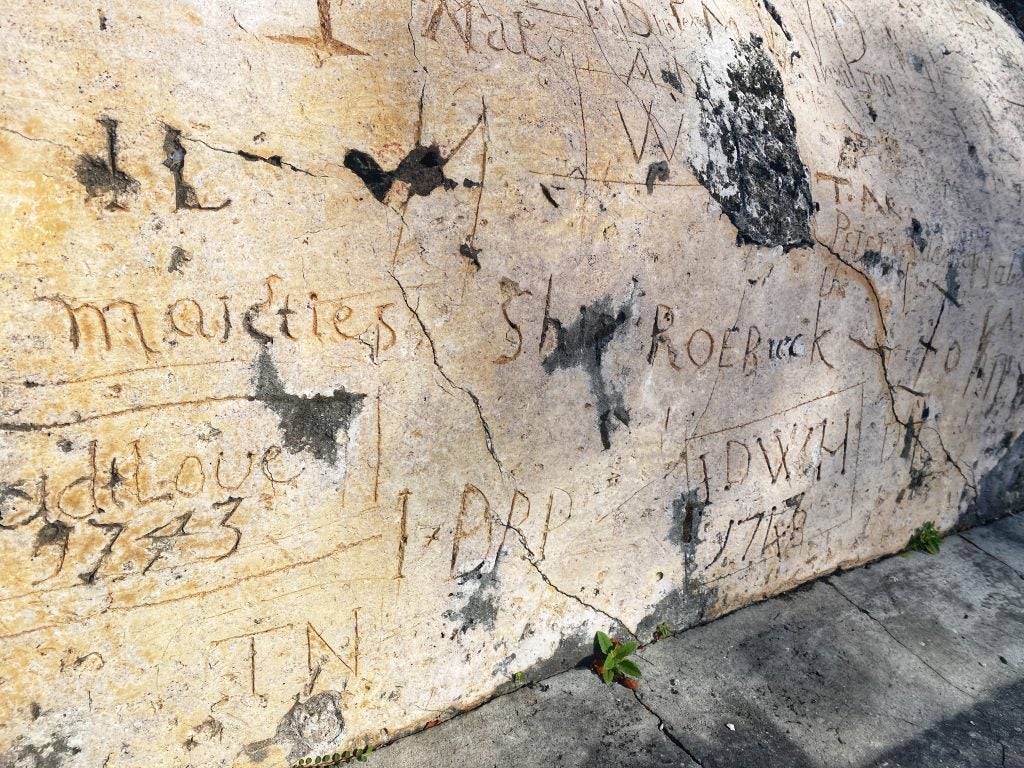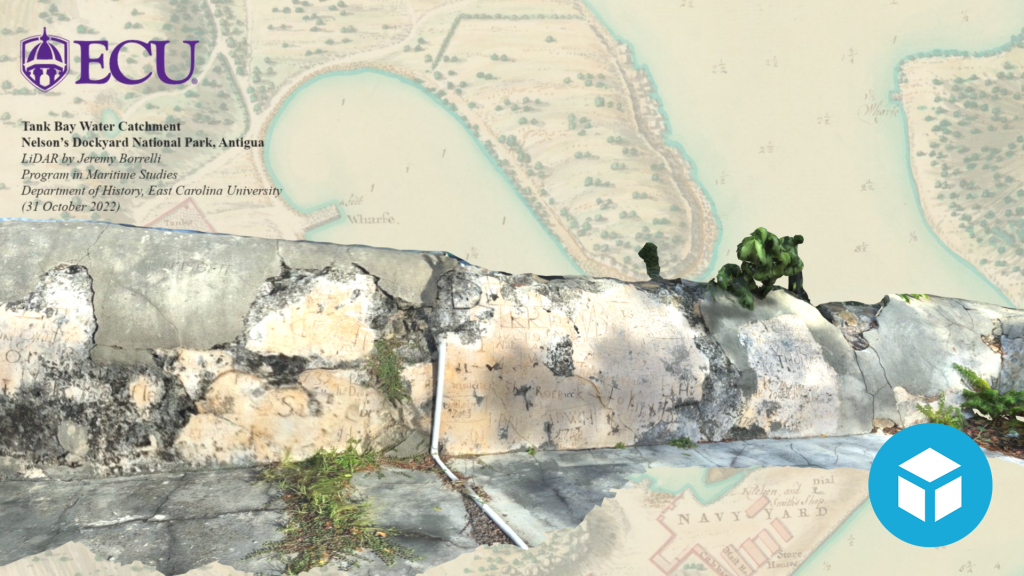Antigua is surrounded by water, yet it has minimal fresh water sources within the island itself. This problem was evident to early colonists who were required to build large catchments and tanks to collect rainwater for hydration. On 8 February 1733, an act was passed by the Antigua legislature to provide funding to build a water catchment at English Harbor (Nicholson 2002: 8). The catchment consisted of two large cisterns, which could hold approximately 240 tons of water and could provide potable water to the village inhabitants and dockyard (Lanaghan 1884: 268). This work was completed on the western side of English Harbor just north of the naval dockyard entrance. The small inner bay on the western fork of the harbor, Tank Bay, was named for this structure (Figure 1).

Image courtesy of the John Carter Brown Library, modified by author.
On the low surrounding wall of the water catchment are many inscriptions and carvings made by 18th century sailors and soldiers who were stationed in Antigua or stopped at English Harbor to refit and careen their vessel. The graffiti includes individual’s names, ship names, home towns, and dates. The name “Nelson” can be seen, reflecting Admiral Horatio Nelson, who was stationed as the head of the Leeward Islands Squadron on Antigua in 1784. The earliest carving, however, was made by John Home of HMS Roebuck in 1739 (Nicholson 2002: 8; Figure 2).

“John : Home Roebuck From 1730 to 1739 His Majesties Ship ROEBuck”
Clink the image below to view a 3D section of the water catchment recorded by the research team in 2022.
